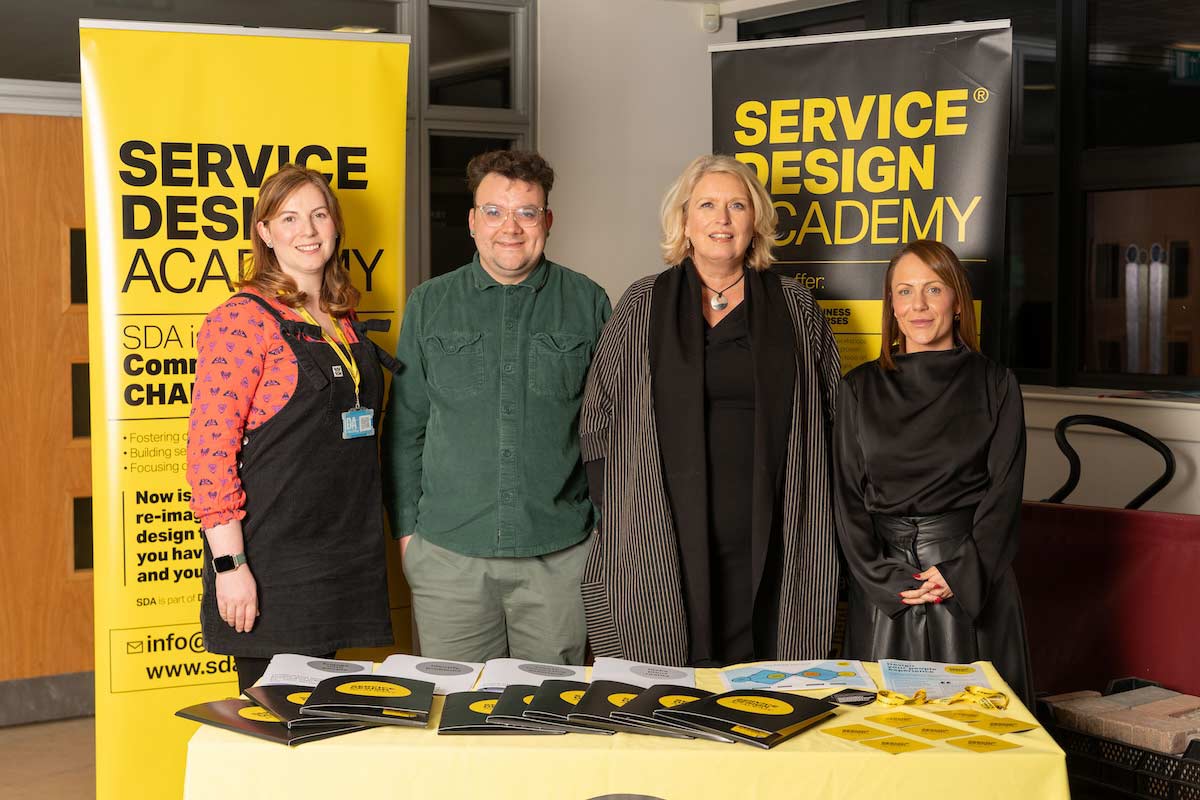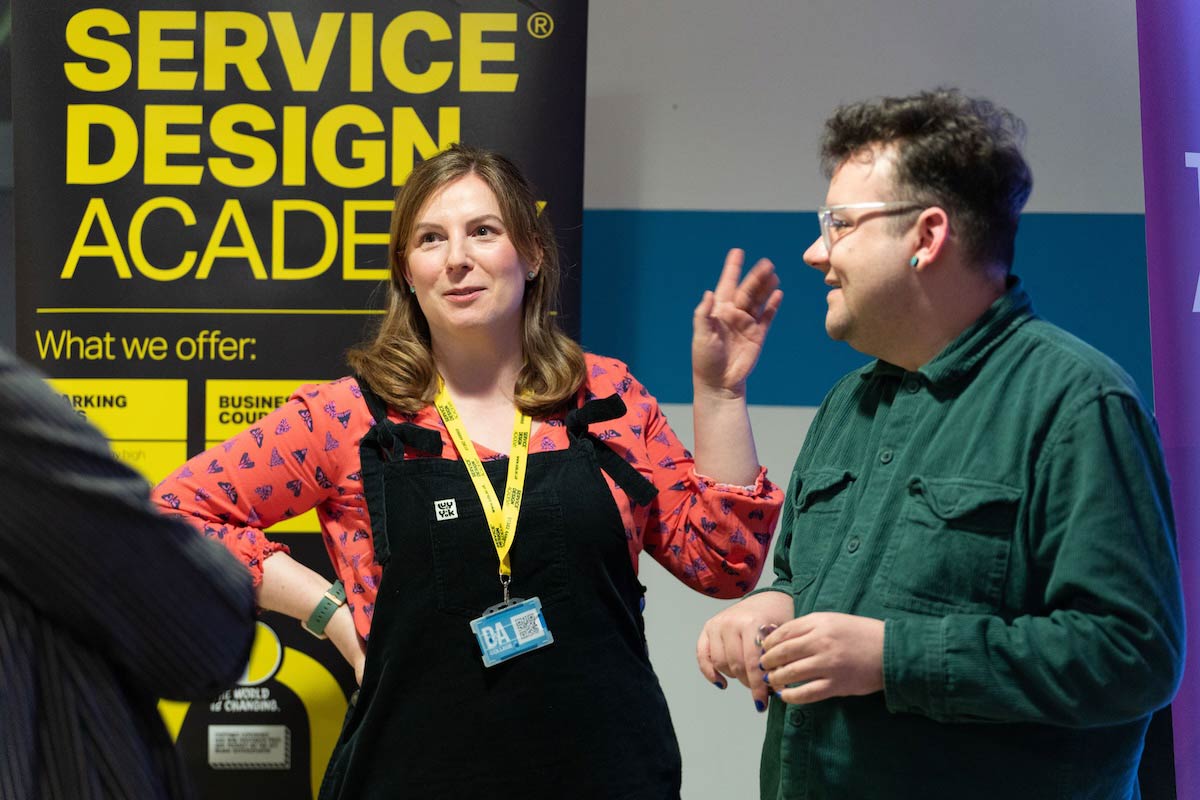How can adopting a Service Design approach support business growth even in financially challenging times?
Written by Caryn Gibson, Business Partnerships Manager at Dundee & Angus College.
I truly believe that there are so many ways in which adopting a Service Design Approach can help you to innovate and improve efficiencies whilst maintaining your highest level of customer service through what is, no doubt, one of the most financially challenging times for a lot of businesses.

(L-R) Kim Anderson, Connor Finlayson and Maralyn Boyle from the Service Design Academy with Caryn Gibson.
Here are a few reasons why:
Customer-Centricity: Every business I work with operates with their customers’ needs as a driver but many will admit to basing their decision making on assumptions.
Service design places a strong emphasis on understanding and meeting the needs of customers. By adopting this approach, businesses can gain a deeper understanding of their customers' experiences, preferences, and pain points throughout their journey with the company. This customer centric focus enables businesses to tailor their services to better meet customer needs, leading to higher satisfaction, increased loyalty, and ultimately, improved business performance.
During financial challenges, maintaining customer loyalty is crucial for sustaining revenue streams. Service design helps businesses enhance the customer experience by addressing pain points, improving service quality, and offering personalised solutions. By prioritising customer satisfaction and continuously adapting services to meet evolving needs, businesses can foster stronger relationships with their customers, increasing retention rates and reducing churn. Loyal customers are also more likely to recommend the business to others, helping to attract new customers and drive growth even in challenging economic conditions.

Innovation and Differentiation: Businesses will often share that the pressure of competition means they feel the need to be ahead of the curve when it comes to innovation. Ideas are easy to generate, but how can they tell the difference between an idea and an opportunity?
Service design encourages businesses to think creatively and innovatively about how they deliver value to customers. By thoroughly analysing the customer journey and identifying areas for improvement, businesses can uncover opportunities to differentiate themselves from competitors and create unique, compelling service offerings. This focus on innovation not only helps businesses stay ahead in the market but also fosters a culture of continuous improvement and adaptability.
Financial challenges often require businesses to adapt quickly to changing market conditions and customer demands. Service design encourages a culture of innovation and experimentation, allowing businesses to explore new ideas, products, and service offerings.
By regularly gathering feedback from customers and stakeholders, businesses can identify emerging trends and opportunities, enabling them to pivot their strategies and stay ahead of the competition. Additionally, service design methodologies such as prototyping and testing enable businesses to rapidly iterate on new concepts, reducing the time and cost associated with bringing innovative solutions to market.
Efficiency and Effectiveness: Producing the desired result with the minimum amount of wasted time and resources is the ideal for most businesses.
Service design involves optimising processes and workflows to deliver services more efficiently and effectively. By streamlining operations and eliminating unnecessary steps or pain points in the customer journey, businesses can improve productivity, reduce costs, and enhance overall performance. Additionally, service design methodologies such as prototyping and testing allow businesses to identify potential issues early on and make adjustments before fully implementing new services, minimising the risk of costly errors or failures.
Service design methodologies emphasise the efficient allocation of resources to deliver value to customers. By thoroughly analysing and redesigning processes, businesses can identify opportunities to reduce costs without sacrificing quality. For example, simplifying service delivery processes, eliminating redundancies, or automating certain tasks can help streamline operations and lower expenses. Moreover, by understanding customer needs and preferences, businesses can prioritise investments in areas that provide the most value, ensuring that limited resources are allocated effectively.
At the Service Design Academy we offer a range of solutions for both individuals and teams. From short snappy courses that give you the skills to take immediate action in your business to bespoke projects tailored to tackling a particular challenge your business is facing.
Why not check out what our customers had to say:
To see our full list of courses or to speak to the team visit the Service Design Academy website.
Find out more
Contact the Service Design Academy:
Call 01382 448868 or
email info@sda.ac.uk
or speak to the D&A Business Partnerships Team:
Call 01241 432 724 or
email business@dundeeandangus.ac.uk

